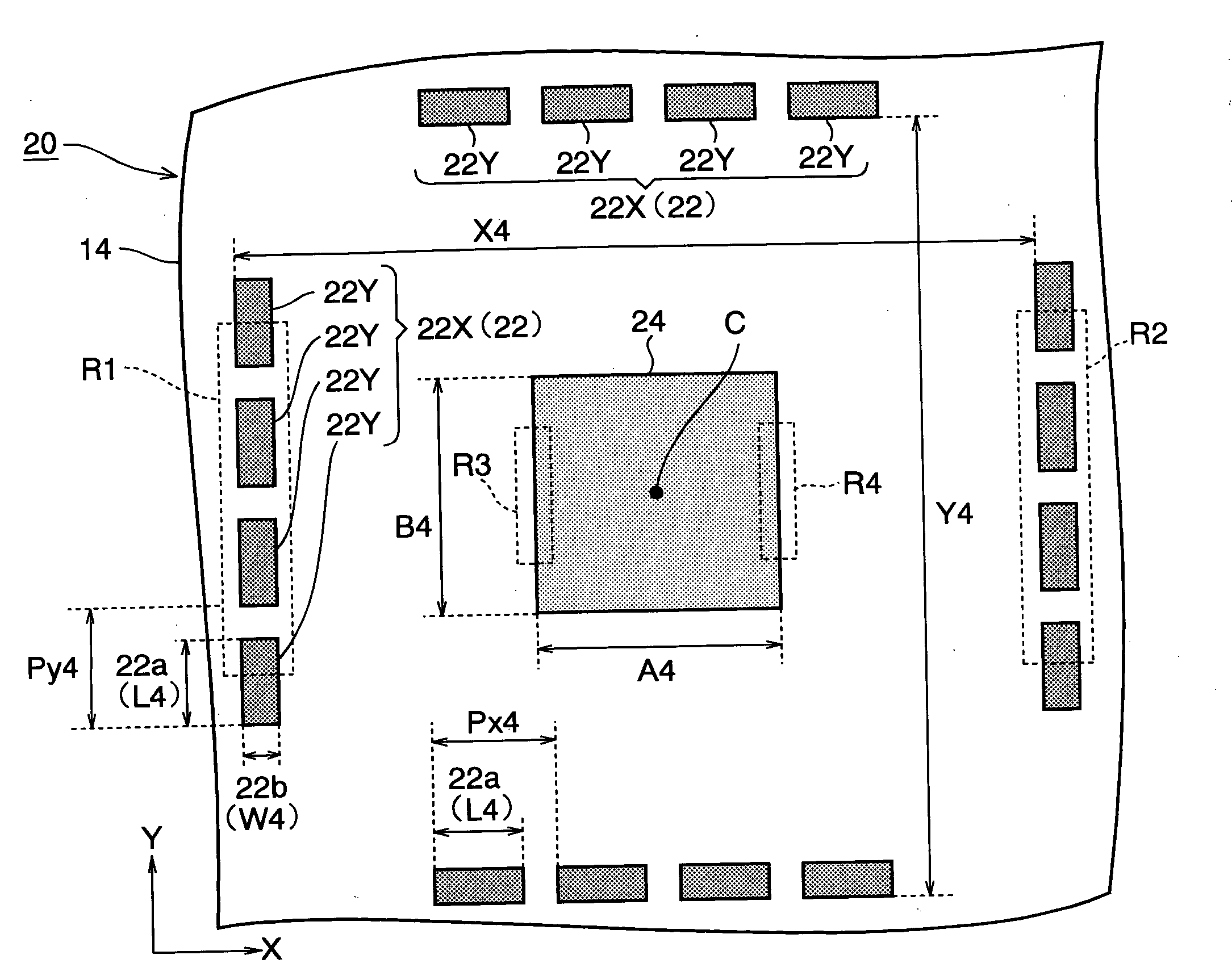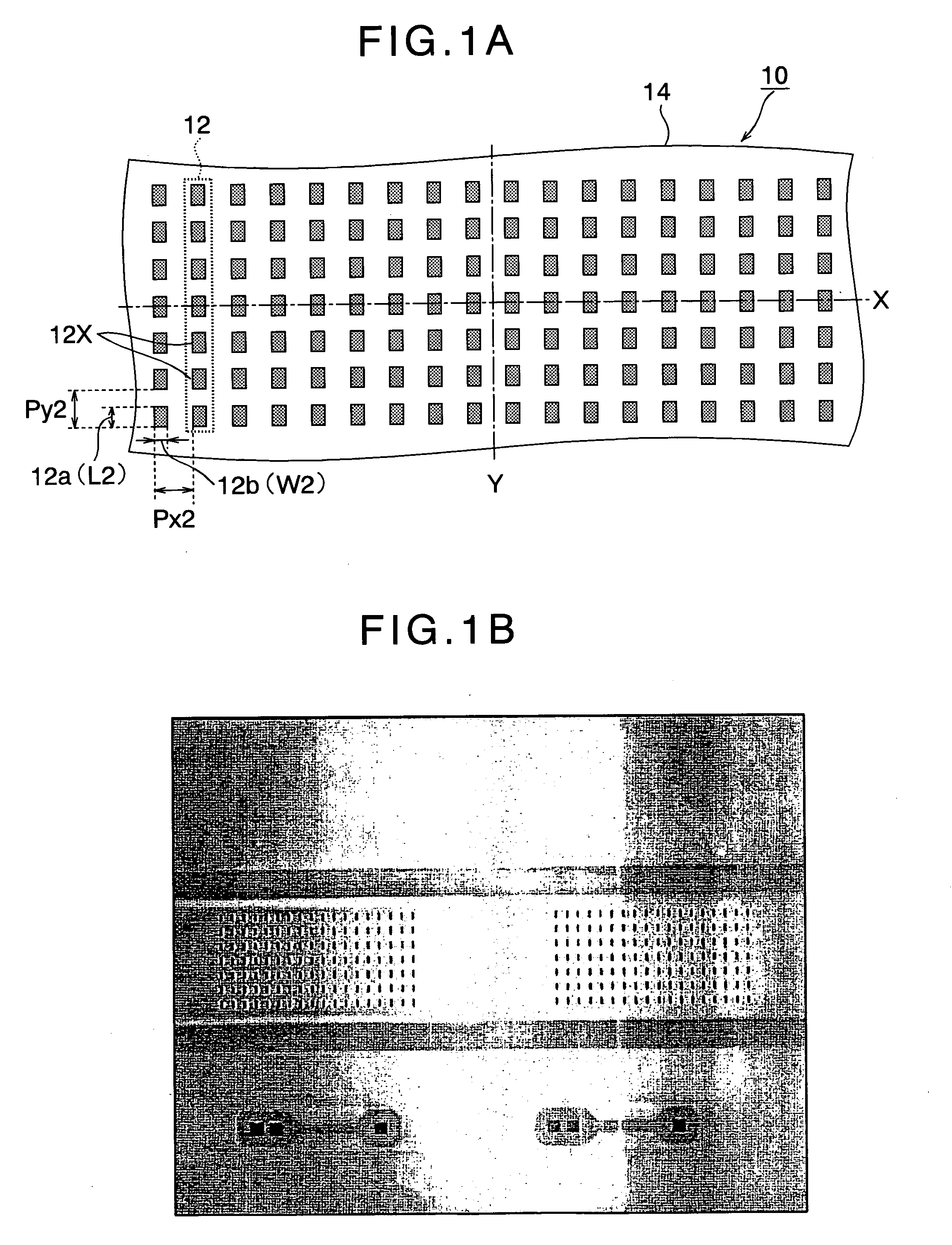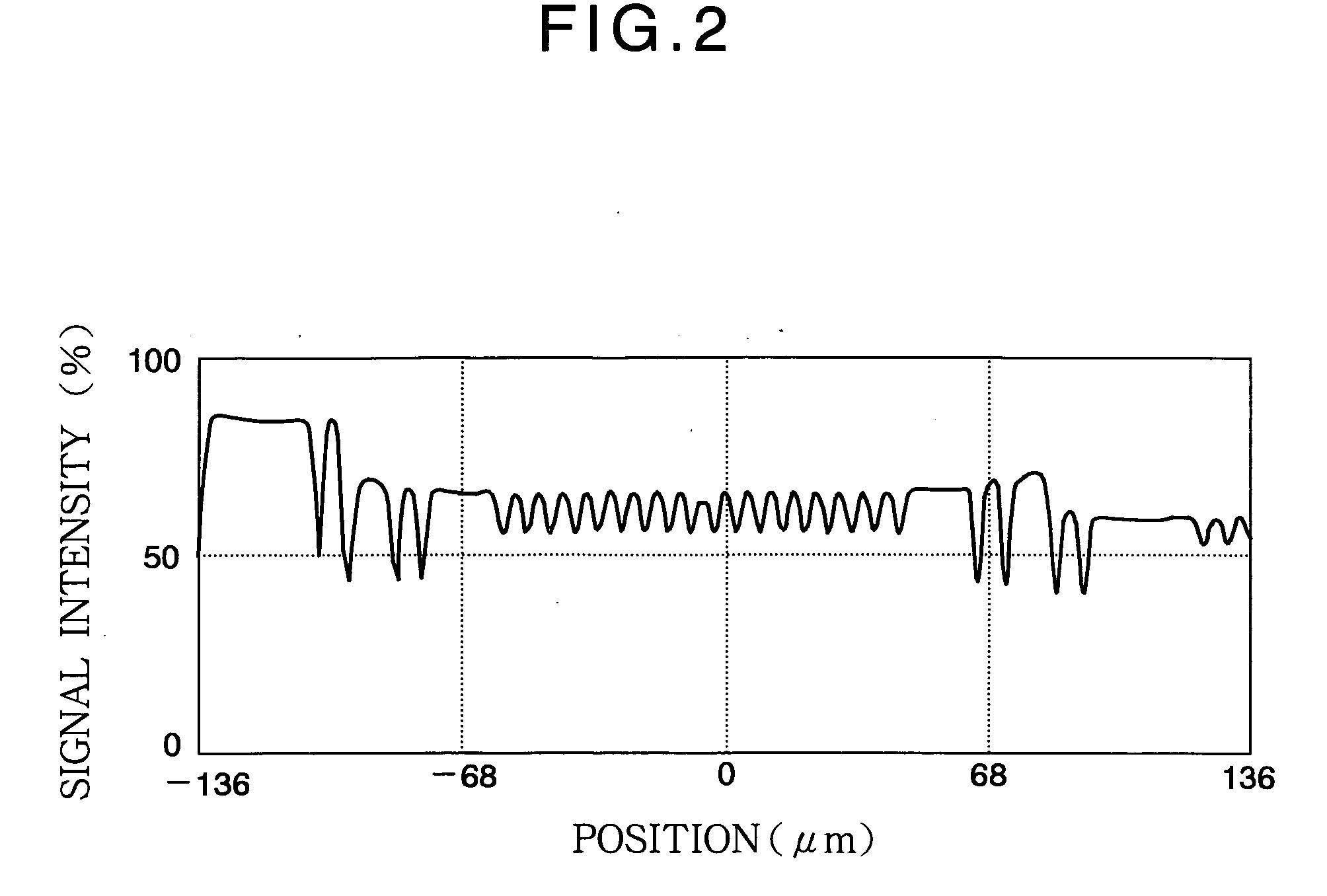Alignment mark and overlay inspection mark
a technology of alignment marks and overlays, applied in the direction of instruments, photomechanical devices, optics, etc., can solve the problems of adhesive force between the alignment marks and the surface, deviation of resist patterns, and separation of overlay inspection marks, so as to prevent separation, prevent breakage, and prevent crack generation
- Summary
- Abstract
- Description
- Claims
- Application Information
AI Technical Summary
Benefits of technology
Problems solved by technology
Method used
Image
Examples
first embodiment
[0053]A configuration example of an alignment mark of the first embodiment of the present invention will be described with reference to FIG. 1. The configuration example is intended to prevent the generation of the crack in the heat treatment. In this example, the alignment mark is formed at the same time as the formation of tungsten (W) plugs so that the alignment mark has the same structure as the tungsten plugs. Therefore, the alignment mark of the first embodiment is particularly suitable for alignment adjustment of a resist mask used after the forming process of the tungsten plugs.
[0054]FIG. 1A is a schematic plan view showing the alignment mark of the first embodiment as seen from above. FIG. 1B is a photographic view of the alignment mark taken by optical microscope at the magnification of 50 times.
[0055]The configuration example of the alignment mark used for the alignment adjustment in the direction of X-axis will be described. The alignment mark 10 includes linear array pa...
second embodiment
[0096]A configuration example of the alignment mark of the second embodiment will be described with reference to FIG. 5A. The configuration example of the alignment mark is intended to prevent the breakage of the alignment mark due to the heat treatment.
[0097]FIG. 5A is a schematic plan view of the alignment mark of the second embodiment. FIG. 5B is a schematic view of an overlay inspection mark of the second embodiment as seen from above.
[0098]The configuration example of the alignment mark used for the alignment adjustment in the direction of X-axis will be described. The alignment mark 10 is formed at the same time as a ferroelectric capacitor structure in a forming process of the ferroelectric capacitor structure of the ferroelectric memory device. Therefore, the alignment mark 10 of the second embodiment is particularly suitable for alignment adjustment of a resist mask used after the forming process of the ferroelectric capacitor structure.
[0099]As shown in FIG. 5A, the alignm...
PUM
 Login to View More
Login to View More Abstract
Description
Claims
Application Information
 Login to View More
Login to View More - R&D
- Intellectual Property
- Life Sciences
- Materials
- Tech Scout
- Unparalleled Data Quality
- Higher Quality Content
- 60% Fewer Hallucinations
Browse by: Latest US Patents, China's latest patents, Technical Efficacy Thesaurus, Application Domain, Technology Topic, Popular Technical Reports.
© 2025 PatSnap. All rights reserved.Legal|Privacy policy|Modern Slavery Act Transparency Statement|Sitemap|About US| Contact US: help@patsnap.com



